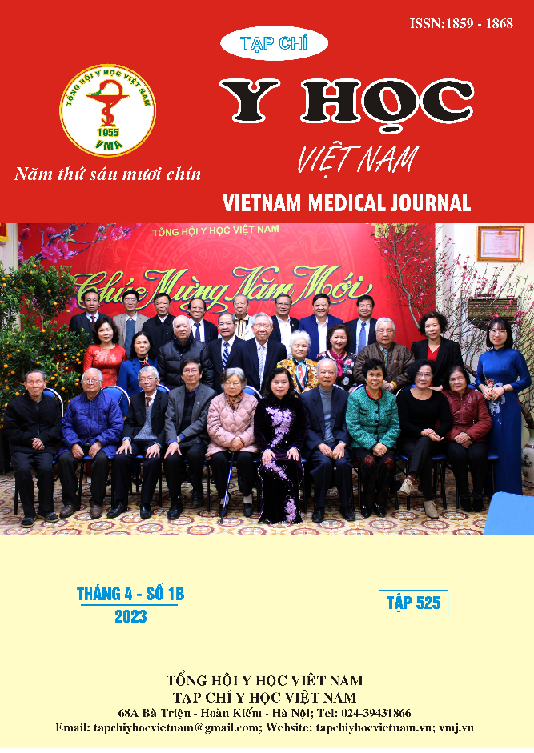RESEARCH ON SOME FACTORS AFFECTING THE SURGICAL RESULTS OF SURGICAL BLOOD BECAUSE OF ANOTHER MINISTERIOUS BLOOD
Main Article Content
Abstract
Objectives: Study on factors affecting the outcome of surgical treatment of subarachnoid hemorrhage due to ruptured middle cerebral aneurysm. Methods: Retrospective study of 41 patients with ruptured middle cerebral aneurysms undergoing surgery at Bach Mai Hospital from June 2021 to June 2022. Results: 41 patients, mean age 55.9 ± 11.9, rate male: female » 2:3. Factors affecting surgical results: Patient characteristics; The rate under 30 years old is good 100%, the age group over 60 years old has good rate 41.7%; Clinical grade: Good treatment results grade I 100%, bad (grade IV, V) 23.5% and 60% respectively; Image characteristics: The bleeding level according to Fischer improved grade I, II with good results 100% and 75%, respectively, grade III, IV with bad results, 7.2% and 33.4%, respectively. Small aneurysms have good treatment results of 63.6%, large aneurysms have average results of 42.1% and bad results of 31.6%. The aneurysm neck size was narrow, good results were 66.7%, wide average results were 52.5% and bad results were 29.5%; Surgical characteristics: Intraoperative rupture had average and bad results 33.3% and 50%, no rupture had good results 58.6%. Temporary gill artery clamp: No clamping good results 62.5%, with clamping good results 20% and bad results 28%. Conclusion: Good treatment results were more common in the group of patients with good preoperative clinical condition, low Fischer subarachnoid bleeding grade, pocket size The aneurysm was small, the neck of the aneurysm was narrow, and the patient did not have an intraoperative aneurysm rupture or a temporary intraoperative clamping of the gill artery.
Article Details
References
2. Nguyễn Thị Thủy (2018), “Đánh giá một số yếu tố ảnh hưởng đến kết quả điều trị phẫu thuật ở bệnh nhân phình động mạch não vỡ”, Luận văn thạc sĩ, Đại học Y Hà Nội.
3. Ali J. Ghods, Demetrius Lopes, and Michael Chen, (2012), “Gender Differences in Cerebral Aneurysm Location”, Fronties in neurology,3,78.
4. Gorbran Taha (2015). Factors associated with outcomes in ruptured aneurysmal patients. Romanian Neurosurg, 29, 103-110
5. Mocco J, Ricardo J.K, Sean D.L (2004), “The natural history of unruptured intracranial aneurysms”, Neurosurg Focus, vol 17, November.


